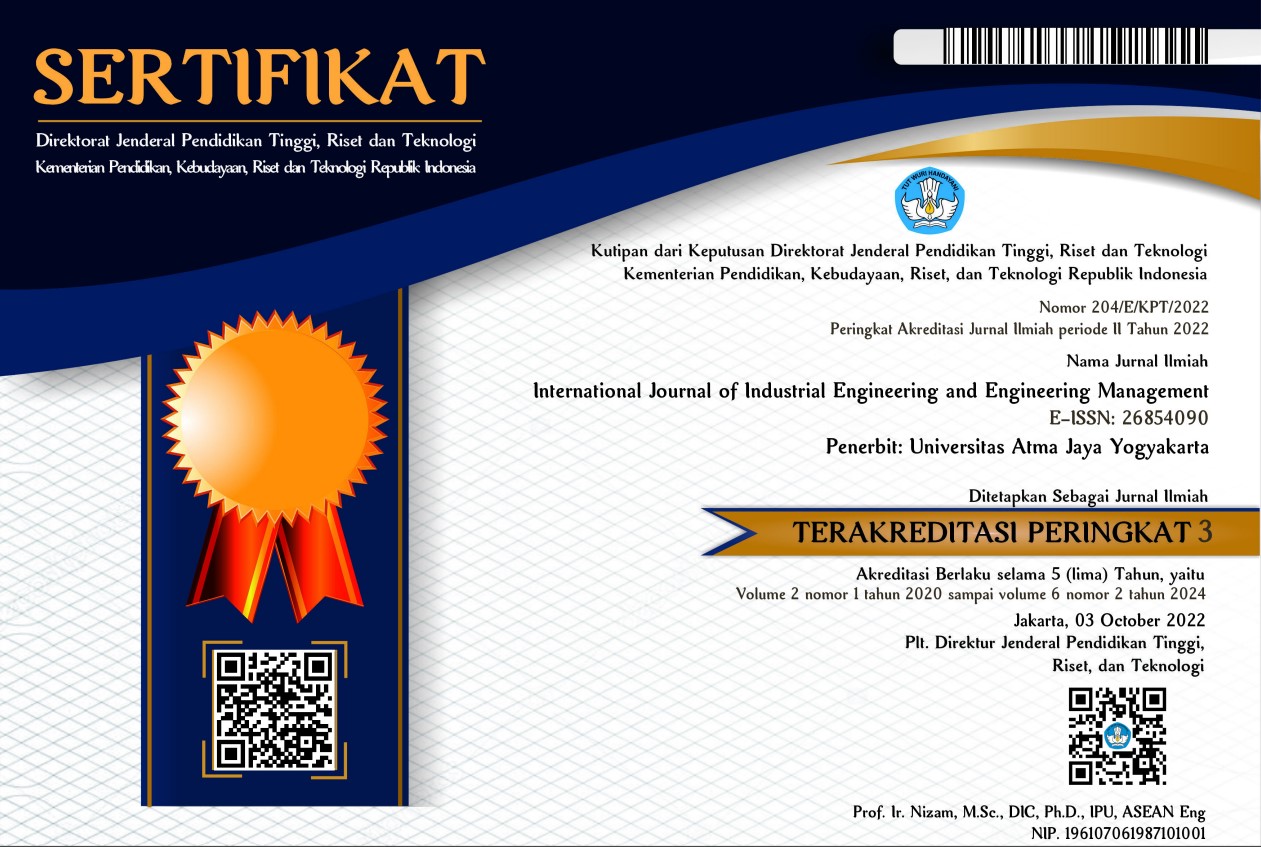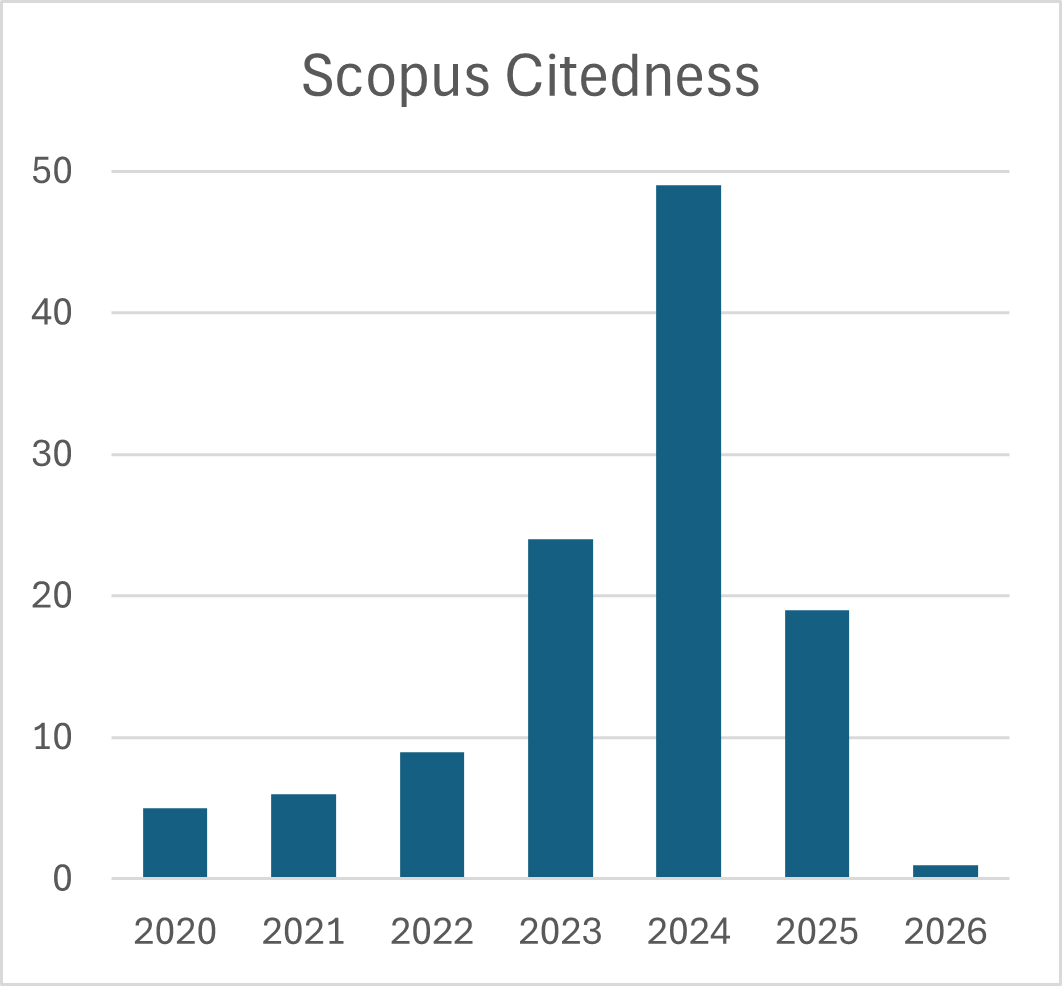Interpretive Structural Modelling for Determining Dominant Success Criteria of Information System (IS) Success at Handycraft SMEs in Yogyakarta, Indonesia
DOI:
https://doi.org/10.24002/ijieem.v1i1.2294Keywords:
information system, handcraft SMEs, IS Success model, interpretive structural modelingAbstract
The purpose of this research paper is to determine the dominant criteria of Information System (IS) success specific to handcraft SMEs in Yogyakarta and to establish relationship among those criteria using interpretive structural modeling (ISM). A small portion of those SMEs have started using information system. However, they face several barriers to successfully implement the information system. Therefore, it is necessary to ensure the success of information system implementation. But, no study has been done regarding the measurement IS success specific to handcraft SMEs in Yogyakarta. This research involved interview-based surveys and ISM approach to determine the dominant criteria of IS success of SMEs in Yogyakarta context. In total, 16 SMEs were involved as research objects in this research. In this research, four cluster of SME have been identified and the modified IS Success model for each cluster was developed accordingly. The modified model for each cluster has 14, 20, 16 and 30 criteria respectively. Through ISM, a relationship model among the criteria for each model was also obtained. It was concluded that “ease of use”, “ease of learning”, and “data accuracy” are significant criteria of IS Success model in SMEs in Yogyakarta. These criteria are considered as the dominant criteria to implement information system successfully. In addition, the desired results of successful implementation is represented by “improved outcomes”.
References
Adarsh A., & Gunjan B. (2017). Interpretive structural modelling for attributes of software quality. Journal of Advances in Management Research, 14, 256–269.
Alshardan, A., Goodwin R., & Rampershad G. (2013). International Journal of Conception on Computing and Information Technology, 1, 12 – 17.
Chitrasen S., Saurav D., Siba S.M., & Bikash R. D. (2016). Interpretive structural modelling of critical risk factors in software engineering project. Benchmarking: An International Journal, 23, 2-24.
DeLone W. H., & Mclean E.R. (1992). Information systems success: the quest for dependent variable. Information Systems Research, 3, 60–95.
DeLone W. H., & McLean E.R. (2003). The DeLone and McLean model of information systems success: A ten-year update. Journal of Management Information Systems, 19, 9–30.
Gable G.G., Sedera D., & Chan T. (2003). Enterprise systems success: A measurement model. Proceedings Twenty-Fourth International Conference on Information Systems, Seattle, USA, 576–591.
Gable G.G., Sedera D., & Chan T. (2008). Reconceptualizing information system success: The IS-impact measurement model. Journal of the Association for Information Systems, 9, 377–408.
Ghobakhloo M., Sai H. T. (2015). Information system success among manufacturing SMEs: Case of developing countries. Information Technology for Development, 4, 573– 600.
Handayani P. W. (2013). Business process requirements for Indonesian small medium enterprises (SMEs) in implementing enterprise resource planning (ERP) dan ERP systems comparison. Journal of Computers, 8, 37 – 41.
Jitesh T., Arun K., & Deshmukh S.G. (2008). Interpretive structural modelling (ISM) of IT-enablers for Indian manufacturing SMEs. Information Management & Computer Security, 16, 113-136.
Kanaracus C. (2008). Retrieved from https://www.infoworld.com/article/2651482/techology-business/gartner--global-it-spending-growth-stable.html, accessed 12/11/2017.
Muktesh C., Sudhir K. J., & Ravi S. (2013). Modeling of information security management parameters in Indian organizations using ISM and MICMAC approach. Journal of Modelling in Management, 8, 171–189.
Petter S., Delone W., & McLean E. (2008). European Journal of Information Systems, 17, 236–263.
Pujani V., & Xu J. (2005). Proceeding International Conference on Services Systems and Services Management.
Seddon P.B. Dimension of information system success. Communications of the Association for Information Systems, 2 (20).
Seddon P.B. (1997). A respecification of the De Lone and McLean model of IS success. Information Systems Research, 8, 240-253.
Seddon P B., Staples D.S., Patnayakuni R., Bowtell M. J. (1998). The IS effectiveness matrix: The imprtance of stakeholder and system in measuring IS success. Proceedings of the International Conference on Information Systems, Helsinki, Finland, 165–177.
Suharyanti Y., Purnama I. L. I., & Suyoto. (2009) Jurnal Penelitian dan Pengembangan Pemerintah Provinsi DIY , 1, 59–69.
Tambunan T.T. H. (2011). Retrived from http://www.iisd.org/tkn/pdf/impact_trade_lib_indonesia.pdf, accessed 15/05/2015.
Wahid F., & Iswari L. (2007). Proceeding Seminar Nasional Aplikasi Teknologi Informasi 2007, 75 – 79.
Warfield J.N. (1974). Developing interconnection matrices in structural modeling. IEEE Transactions on Systems, Man, and Cybernetics, 4, 81–87.








